What is an Air Cooler Fan Motor?
An air cooler fan motor is a vital component within an air cooling system, responsible for driving the fan that circulates cooled air throughout a space. This electric motor is designed to convert electrical energy into mechanical energy, which in turn propels the fan blades to ensure effective air circulation. The efficient operation of an air cooler largely depends on the performance of its fan motor, as it directly influences the rate at which air is drawn in and distributed. Without a functional motor, the cooling mechanism would be rendered ineffective, leading to inadequate air flow and temperature control.
The core mechanics of an air cooler fan motor involve the interplay between electrical currents and rotor movement. When power is supplied to the motor, it generates a magnetic field that causes the rotor—typically a cylindrical component—to spin. This spinning motion is transmitted to the fan blades, which are attached to the rotor, thus enabling the movement of air. The design and engineering of the motor play a significant role in determining the overall performance, energy efficiency, and longevity of the air cooler.
There are various types of motors utilized in air cooler systems, each with distinct characteristics suited to different operational needs. Induction motors are commonly found in air coolers due to their durability and cost-effectiveness. These motors operate on the principle of electromagnetic induction, offering reliable performance for prolonged periods. Additionally, shaded pole motors are employed for smaller units, providing a simple and compact solution, albeit with limited efficiency. Overall, understanding the function and characteristics of air cooler fan motors is essential for achieving optimal performance and ensuring effective air cooling in diverse environments.
Types of Air Cooler Fan Motors
Air coolers utilize different types of fan motors to enhance their cooling performance. The three predominant types of motors found in air coolers are AC motors, DC motors, and shaded pole motors. Each of these motor types has distinct characteristics that influence their applications and overall efficiency.
AC motors, or alternating current motors, are widely used due to their durability and simplicity. They operate efficiently at a fixed speed and are particularly suited for traditional air cooler designs. The main advantages of AC motors include minimal maintenance requirements and cost-effectiveness, which makes them a popular choice in various residential and commercial settings. However, their performance can lead to higher energy consumption compared to other motor types, potentially impacting operational costs.
In contrast, DC motors, or direct current motors, are becoming increasingly popular in modern air coolers. Their ability to vary speed efficiently allows for enhanced control over airflow and cooling capabilities. DC motors are known for their lower energy consumption, making them an environmentally friendly option that can reduce electricity bills. Furthermore, they typically operate more quietly, making them suitable for residential use where noise levels may be a concern. Nevertheless, the upfront cost of DC motor-based air coolers may be higher, which could deter some consumers.
Shaded pole motors offer another alternative for air coolers. These motors are generally simpler in design and are known for their reliability. Shaded pole motors, however, tend to be less energy-efficient compared to AC and DC motors. While they can provide good performance, their lower efficiency may lead to higher operational costs over time. The choice of motor type for an air cooler not only impacts the initial purchase price but also the long-term operating expenses, cooling effectiveness, and sound levels, making it a critical consideration for consumers.
Common Issues and Troubleshooting of Air Cooler Fan Motors
Air cooler fan motors can experience a variety of issues that may hinder their performance. Understanding these common problems can help in effective troubleshooting and maintenance. One prevalent issue is overheating. This often occurs when the motor is subjected to excessive strain, typically caused by obstructions in the airflow or prolonged operation without adequate rest. An overheated motor may emit a burnt smell or shut down unexpectedly. To address this, it is essential to ensure that all vents are clear and that the cooler is not continually running in extreme temperatures without breaks.
Another common concern is unusual noises emanating from the motor. These noises can range from a humming or buzzing sound to grinding or rattling. A buzzing sound might indicate that the motor is running improperly, possibly due to misalignment or loose fittings. On the other hand, grinding noises can signify worn-out bearings or debris caught within the motor. Regular inspection and maintenance can help mitigate these issues, such as lubricating moving parts and tightening any loose connections.
Complete motor failure, while less frequent, is a critical issue that may require immediate attention. Symptoms leading up to such failure may include the motor failing to start, frequent tripping of circuit breakers, or a complete loss of power. Potential causes include electrical faults, worn brushes, or damaged windings. To troubleshoot motor failure, users should first check electrical connections and fuses for continuity. If these elements are intact, further investigation into internal components may be necessary.
Overall, understanding these common problems associated with air cooler fan motors empowers users to diagnose and rectify issues promptly, ensuring optimal performance and longevity of their cooling units.
Maintenance Tips for Air Cooler Fan Motors
Proper maintenance of air cooler fan motors is essential for enhancing their lifespan and ensuring optimal performance. Regular cleaning and inspection should be a routine part of your maintenance schedule. Dust and debris can accumulate on the motor components, which may obstruct airflow and lead to overheating. To clean the motor, disconnect it from the power supply and use a soft brush or cloth to gently remove any dirt. It is also advisable to check for any signs of wear or damage in the motor’s components such as the bearings, windings, and connections.
Lubrication is another critical aspect of maintenance. Many air cooler fan motors have bearings that require periodic oiling. Use a lightweight machine oil or a lubricant specified by the manufacturer. Apply the lubricant sparingly to prevent over-oiling, which can attract dust and lead to additional wear. Ensure that all moving parts move smoothly, as friction can reduce motor efficiency and increase energy consumption.
Being aware of signs of wear can help you address issues before they escalate. Listen for unusual sounds such as grinding or screeching, which may indicate that the bearings are sagging or failing. Additionally, if the motor becomes unusually hot to the touch or shows signs of discoloration, it may require further inspection or replacement. Proper installation and usage are paramount to minimize wear and tear on the motor. Ensure that the mounting is secure and that the motor is positioned correctly without any obstructions to airflow.
Following these maintenance tips will not only prolong the life of your air cooler fan motor but will also improve its efficiency, providing you with reliable service for many years to come. Engaging in regular checks and preventive measures will help in identifying potential issues early, thus avoiding costly repairs or replacements.
Upgrading or Replacing Your Air Cooler Fan Motor
Upgrading or replacing the air cooler fan motor is an important decision that can transform the performance and efficiency of your cooling system. The first step in this process is determining whether your current fan motor is underperforming or has failed. Signs of a faulty motor may include unusual noise, reduced airflow, or sporadic operation. Once you are certain of the need for a replacement, selecting a compatible motor is crucial. You should consider factors such as the motor’s voltage, wattage, and physical dimensions to ensure a proper fit for your air cooler.
When upgrading, opting for a more efficient or quieter motor can bring numerous benefits. Efficient motors can substantially lower electricity consumption, leading to reduced utility bills while delivering the same or improved airflow. Quieter models often incorporate modern technologies that minimize operational noise, enhancing comfort in your living space. Researching various options in the market will help identify the best models suited to your needs and ensure a successful upgrade.
Once you have selected the appropriate replacement motor, the process of replacing it involves several steps. Start by unplugging the air cooler and allowing it to cool down. Access the motor compartment according to the manufacturer’s instructions, which typically involves removing the outer casing. Carefully detach the faulty motor by unscrewing it and disconnecting its electrical connections. Install the new motor by reversing this process, ensuring all connections are secure and that the motor is firmly in place. Finally, reassemble the air cooler and conduct a test run to verify functionality.
By understanding when to upgrade or replace your air cooler fan motor and following the outlined steps, you can enhance your air cooler’s efficiency and lifespan. Keeping your air cooler in optimal condition will ensure you enjoy a comfortable and refreshing indoor environment.
| Air Cooler Brand Name | Aisen, Arctic, Bajaj, Blue Star, Blueberry, Butterfly, Candes, Cello, Cospex, Croma, Crompton, Crompton Greaves, Cruiser, CRUISER C.S.O., Daenyx, Godrej, Greenchef, HAVAI, Havells, Hindware, Hindware Snowcrest, Impex, Intex, Kelvinator, Kenstar, Khaitan, Krish, Lazer, Lifelong, Livpure, Maharaja Whiteline, Mccoy, Onida, Orient, Pigeon, Polycab, Power Guard, Raptas, Sansui, Singer, Sunflame, Symphony, T-Series, Thomson, Usha, V-Guard, Varna, Vego, Venus, Voltas, Wybor |
|---|---|
| Air Cooler Capacity | 21 to 60 liters, 40 to 80 liters, 60 to 85 liters, Below 20 liters |
| Air Cooler Type | Desert, Personal, Room, Tower, Window |
| Technician Type | With Technician, Without Technician |
Only logged in customers who have purchased this product may leave a review.
Related products
-
Air Cooler Parts
Air Cooler Cooling Pads
₹1,560.00 – ₹2,160.00 Select options This product has multiple variants. The options may be chosen on the product pageRated 0 out of 5 -
Air Cooler Parts
Air Cooler Water Tank
₹1,950.00 – ₹2,550.00 Select options This product has multiple variants. The options may be chosen on the product pageRated 0 out of 5 -
Air Cooler Parts
Air Cooler Motor Capacitor
₹390.00 – ₹990.00 Select options This product has multiple variants. The options may be chosen on the product pageRated 0 out of 5 -
Air Cooler Parts
Air Cooler Cooling Pad Frame
₹780.00 – ₹1,380.00 Select options This product has multiple variants. The options may be chosen on the product pageRated 0 out of 5


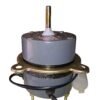
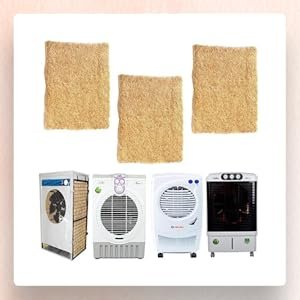
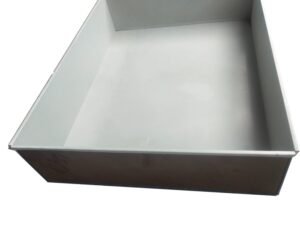
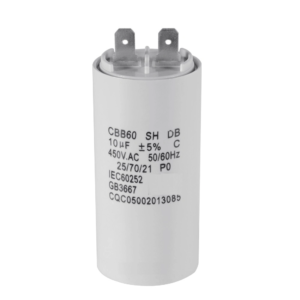
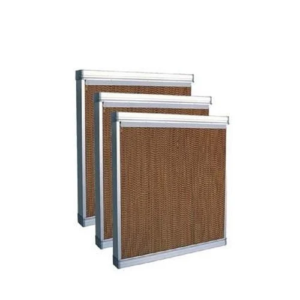
Reviews
There are no reviews yet.